Yew Pruning By Type: ‘Plants Clipped Very Tightly Tend To Experience More Problems’


Elizabeth is a Permaculture Garden Designer, Sustainability Consultant and Professional Writer, working as an advocate for positive change. She graduated from the University of St. Andrews with an MA in English and Philosophy and obtained a Diploma in Applied Permaculture Design from the Permaculture Association.
Reviewed By COLIN SKELLY

Colin is a Horticulturist and Horticultural Consultant with experience in a range of practical and managerial roles across heritage, commercial and public horticulture. He holds the Royal Horticultural Society’s Master of Horticulture award and has a particular interest in horticultural ecology and naturalistic planting for habitat and climate resilience.
Contributions From DARREN LERIGO

Topiary Artist based in the UK who is a member of the European Boxwood and Topiary Society and is the founder of Modern Mint. Having worked all over the UK and in New York, Darren has been featured in articles by The Guardian and has featured in Garden Masterclass videos on YouTube. He is also currently writing a book entitled ‘Modern Topiary’.

Bill is the Director of Boxtrees Nursery, a specialist online retailer in Suffolk specialising in hedging and topiary plants including Buxus, Taxus, Ilex and more.
IN THIS GUIDE
YEW GUIDES
Pruning
Yew is one of the few native conifers we have here in the British Isles and it is popular for use in gardens, whether that’s as a stand-alone specimen, in a natural form, as a topiary or as hedging.
It can be a great low-maintenance choice for a range of situations and circumstances.
One thing that you do need to consider is how to prune yew in different settings in your garden – and the instructions are somewhat different depending on the form you want your yew to take.
We advise on how to prune yew in each of these different scenarios, below.
| Difficulty | Varies depending on form |
| Equipment Required | Secateurs or gardening shears |
| When To Prune | Spring, summer or autumn (depending on type) |
Do You Need To Prune Yew Trees?
Yew left to their own devices grow into majestic and very large trees.
If you have sufficient space then you can certainly choose to leave a yew to grow naturally without much pruning at all.
However, most of the time yews in gardens are grown in different forms and maintaining those different forms will, of course, require at least some pruning.
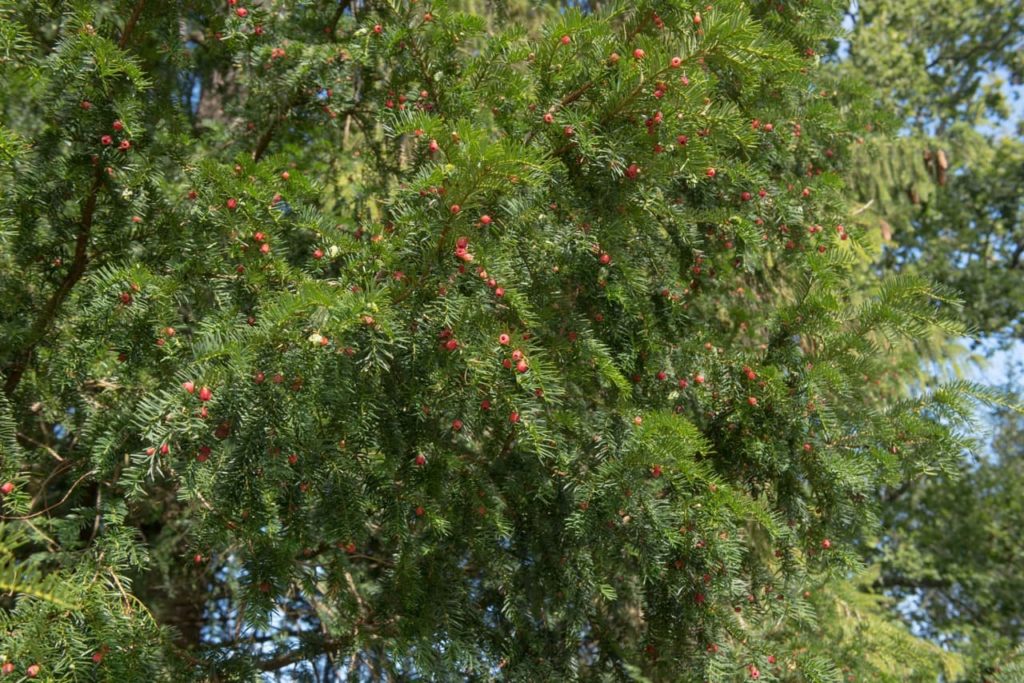
You should prune yews that are in specific upright forms, especially where space is limited.
You should also prune yew trees grown as hedges and those that are grown in topiary forms.
When To Prune Yew
Yews are often pruned in the late summer or early autumn when you are just trimming or keeping things loosely in shape.
“Yew is a vigorous grower, once established,” says Bill Irving, the Director of Boxtrees Nursery Ltd.
“For standard garden hedges, trim once a year in late summer or early autumn, whilst old plants generally respond to pruning in late spring.”
Hard cutting back should also be carried out in spring.

When you are keeping yew in very tight control, you might prune several times over the spring and summer.
The more frequently a yew hedge is trimmed, the denser, tighter and flatter its surface will be, but Bill warns against trimming too frequently:
“Minimise trimming where possible and allow the plant a more natural shape and form.
“Plants clipped very tightly tend to experience more problems.”
Pruning Yew Hedges
When it comes to yew hedges, there are several different types of pruning that you might undertake.
First of all, if you have a newly planted yew hedge, you will likely have to think about formative pruning.
Formative pruning with yew hedges is important because it fosters a straight, upright and dense hedge form.
Formative pruning is usually carried out in the winter or early spring.
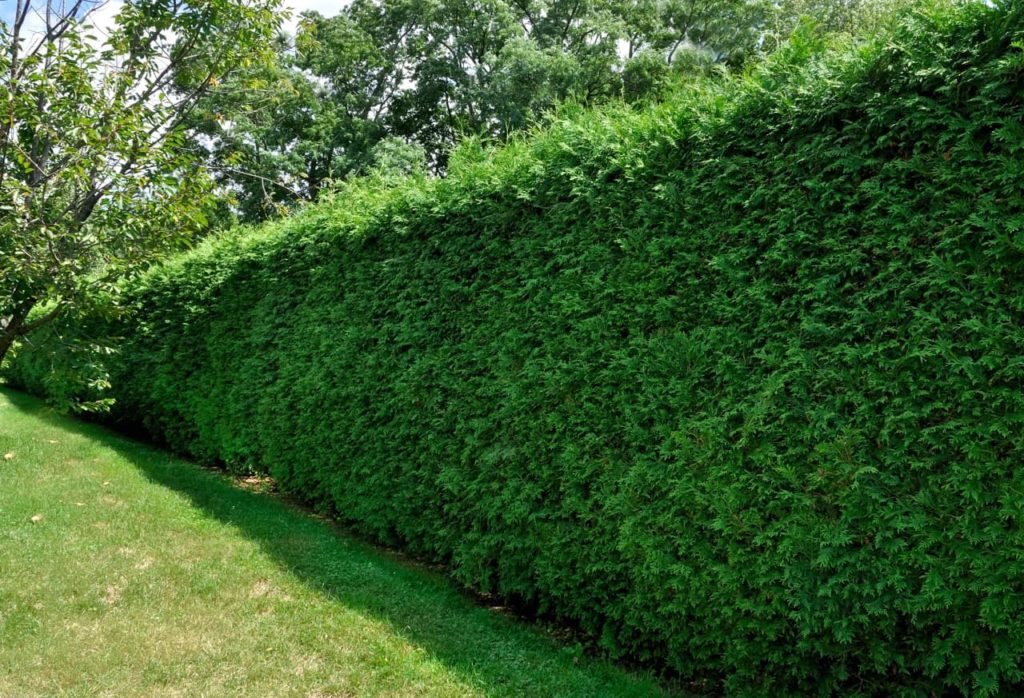
When a yew hedge is first planted, the leading shoot is left unpruned, but straggling side shoots are cut back lightly.
In summer, side shoots are then trimmed and the leading shoot is tied into a support stake or cane as it grows.
Once a yew hedge is established, you will move on to the main maintenance pruning.
This will generally involve cutting back the yew hedge once a year in late summer or early autumn, though it can also involve cutting back 2-3 times a year for a neater and more formal effect.
“How often you cut back a Yew hedge will also depend on its size and location,” says Master Horticulturist Colin Skelly.
“A small hedge bordering a path will need to be cut back more often than a large hedge at the back of a border, for example.”
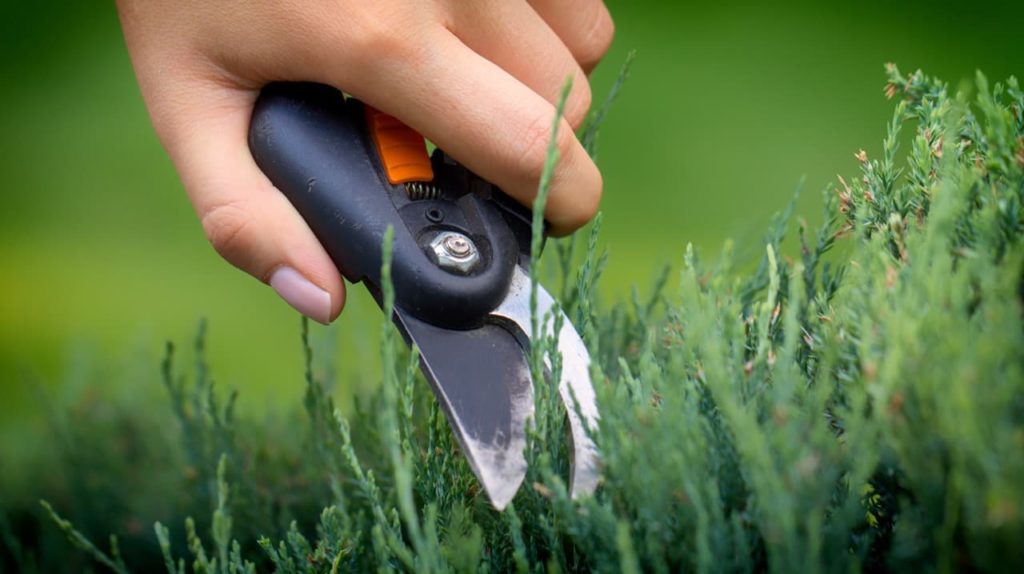
According to the RHS, Yew trees can grow up to around 30cm in a year – but trimming once a year will generally keep your yew hedge in check.1How to grow yew / RHS Gardening. (n.d.). Royal Horticultural Society. Retrieved April 26, 2023, from https://www.rhs.org.uk/plants/yew/growing-guide
However, more regular pruning will keep the surface of the hedge dense and smooth.
If a yew hedge has been neglected and you wish to reduce it in size, it is best not to undertake an extensive renovation prune all at once.
Instead, it is best to prune over three subsequent years to achieve the desired size reduction.
In the first year, you should cut the top back to around 15-20cm lower than the final height desired.

In the next year, you should cut back one of the sides of the overgrown hedge and, in the third year, you should cut back to reduce the width on the other side.
Finally, if bare stems have developed at the base of a yew hedge, there is one type of drastic pruning you can undertake in order to get new growth lower down – coppicing.
This hard pruning involves cutting the yew down to a point around 15-20cm of ground level early in the spring.
New growth should emerge but it will likely be a number of years before your yew hedge recovers.
Pruning Columnar Yew Trees
If you are growing a yew which has an upright or columnar form, some training and pruning will likely be required in order to keep the desired shape.
The branches are often tied together with strong twine to keep them more upright.
Outward growth is also then shortened in August or early September.

It is best to prune individual branches with secateurs rather than using hedge trimmers on a yew of this type and to prune back in the foliage so that the pruning cuts remain hidden within the tree.
Once a yew of this type has reached the desired height, you can also trim the top each summer or early autumn to prevent it from becoming taller than desired.
Pruning Topiary Forms
Yew is often used for topiary and is well suited for use in this way because it develops dense growth and can respond well to regular pruning.
There are, of course, many different topiary forms into which yew trees can be trained.
It is possible to purchase pre-shaped yews or to work on shaping your yew from scratch.
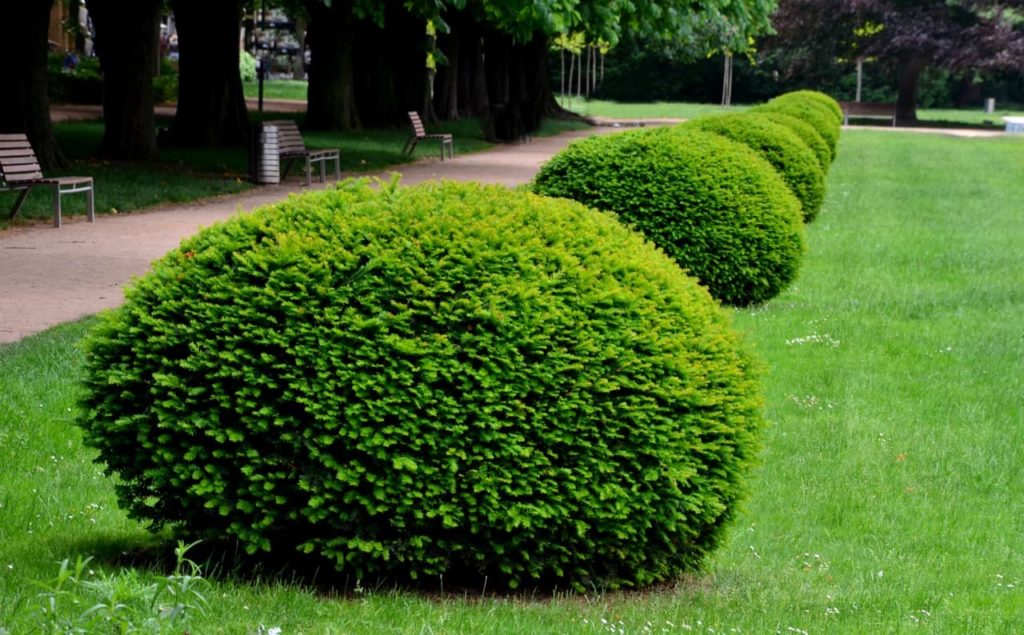
Pruning once a year in late summer or early autumn can help you maintain a basic form and size, but with many topiary forms, additional pruning once or twice more during the spring and summer seasons will be required to maintain a neat form.
Sometimes, a shape will be maintained by just observing the tree, but a frame or guiding form can be placed in order to make it easier to see where pruning should take place.
When pruning for topiary uses, Darren Lerigo from the European Boxwood and Topiary Society explains the importance of the tools you use:
“It’s worth investing in good tools, a decent pair of shears will have good hard steel that will stay sharp longer which will mean the cuts are clean and not torn.
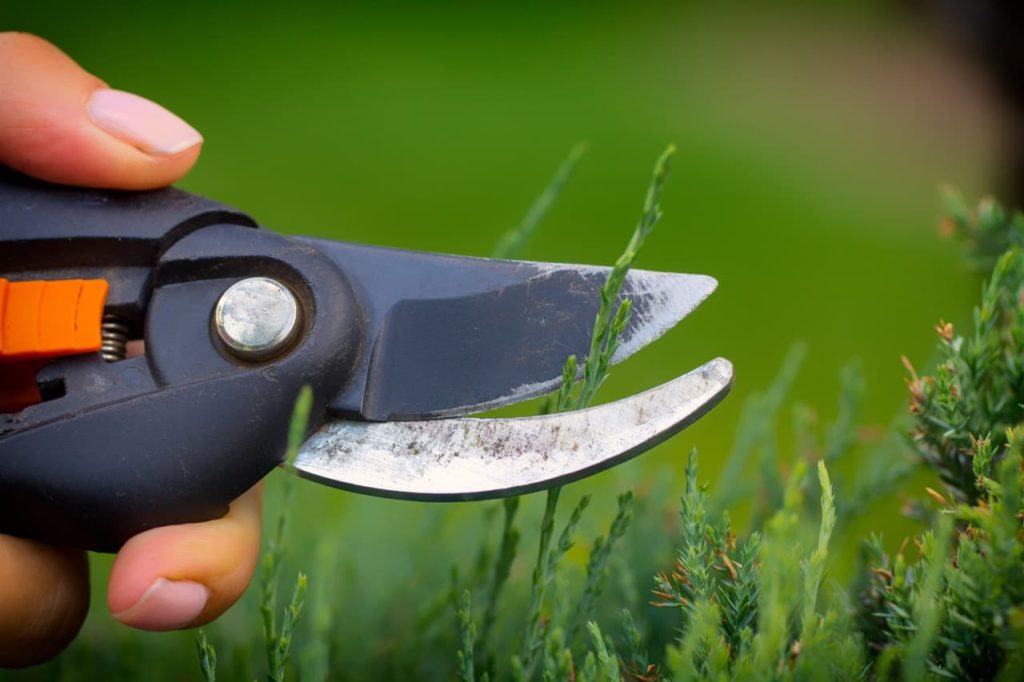
“Get some secateurs, but make sure you try them out first so that you find the ones that fit your hands well and are easy to operate.
“Similarly, topiary hand clippers are important for doing the fine detail,” explains Darren.
Doing so should make this process easier.
References
- 1How to grow yew / RHS Gardening. (n.d.). Royal Horticultural Society. Retrieved April 26, 2023, from https://www.rhs.org.uk/plants/yew/growing-guide
